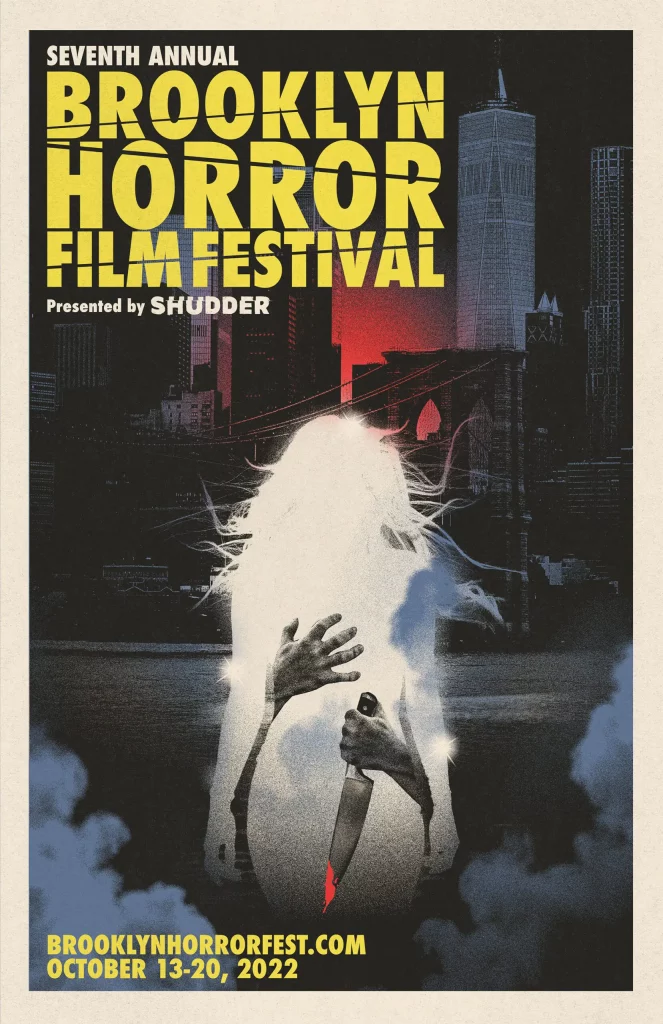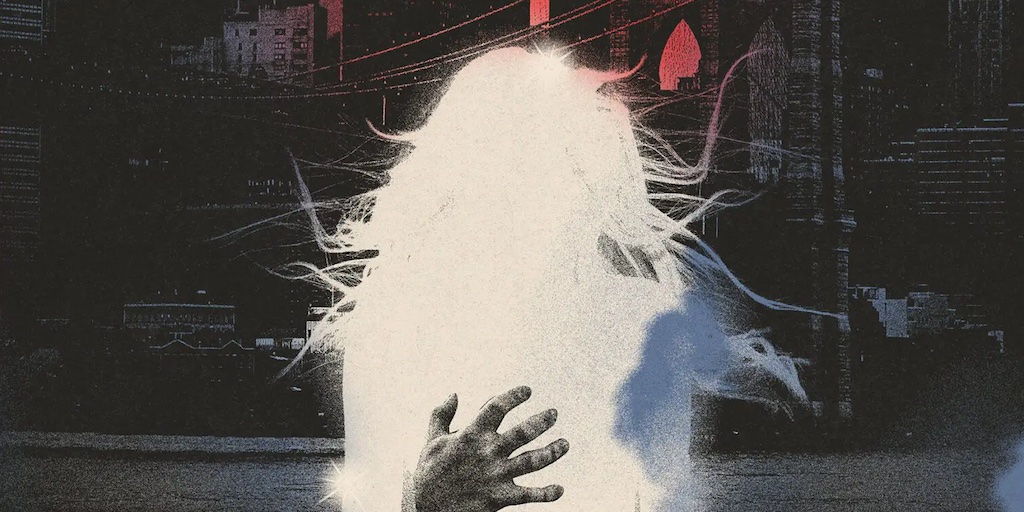Pandemics, and Curdled Nostalgia
What can one film festival say about the state of a genre? That’s a complicated question to ask, and one that probably requires more than a little qualification. Two people attending the same film festival could take in wildly different slates of films — even for something centered around a specific genre, as this year’s Brooklyn Horror Film Festival was.
The festival’s lineup contained a host of new films, from the head-spinning narrative of Something in the Dirt to the confrontational vibe of All Jacked Up and Full of Worms. This was a festival that could include the retro nightmares of V/H/S 99 and a retrospective screening of the 1989 film Society, presented in conjunction with the new horror anthology It Came From the Closet. Even within the genre of horror, there was plenty of ground to cover here.
That being said, the effect of the pandemic — whether overtly or subtly — was discernible in several of the festival’s offerings. Director Andy Mitton’s film The Harbinger — which, strangely, is one of two horror films released in 2022 with the same title — was filmed during the first winter of COVID-19, and its plot makes good use of the pandemic. And that’s before an unsettling figure wearing a plague doctor mask shows up on the scene — or the limits of reality begin to blur.
While the pandemic has played a varied role in several recent films — from a background element in Three Thousand Years of Longing to an essential element of the plot of Kimi — Mitton had a very good reason for using it as an element in his film. In an interview with the website Eye For Film, he explained its role as it relates to audience reactions. “All the machinery of this story came to me quickly over the course of the night,” Mitton said. “The way this might all come together and the way the pandemic might serve as the gasoline basically for the story, not to write about it about exactly on the nose, but to take the collective dread, that’s so rare, because it’s so rare to find a time when everyone on the planet shares the knowledge of this, the experience of this, and the dread of this.”
The Harbinger is a film in which a character might be overtaken by dread when realizing that a demonic entity is nearby — or that they’ve just been interacting without a mask with someone who’s very contagious. It also has a great creature design, a fascinating high concept, and a fantastic lead performance by Gabby Beans.

A lot of great horror has emerged from the very question of “can you trust your neighbors,” which the pandemic setting also situates within the narrative of The Harbinger. Director Isaac Ezban’s film Mal de Ojo (heretofore known in its translated form, to wit: Evil Eye) heads into a very different vein of horror, but an early glimpse of a sick child in the apartment building where the family at the story’s core live touches on something similar. The plot of Evil Eye follows Luna, a girl whose parents leave her in the care of her grandmother while they seek a cure for Luna’s condition. In part, it’s that fear of other people that sends the family out to the rural estate where the bulk of the film takes place — but it’s also a plot point that resonates deeply in the wake of the pandemic.
The first half of Ezban’s film abounds with jump scares — maybe a few too many. Luna suspects that something’s wrong with her grandmother, but the events we witness are given plausible explanations — her grandmother might have a supernatural agenda, or we might simply be watching a generational conflict play out. As the film enters its second half, though, a lot of elements click into place — from the dark fairy tale that opens the film to the question of where Luna’s parents have gone, and what they’re doing there.
Eventually, the story of Evil Eye arrives at some memorably bizarre places — and yet it ends on an image of a setting that’s as “normal” as one could expect. There’s a true sense of being transported here — and of a storyteller’s delight in finding the uncanny in the everyday. It’s worth mentioning, too, that it accomplishes the impressive feat of letting the audience begin to glean what’s actually going on before several of the film’s characters do. And while that isn’t in and of itself horrific, in this context, it absolutely is.
Scenes of horror erupting in the midst of cities showed up again and again, and could be found in films new and old at the festival. Several films directed by Lucio Fulci played over the course of the BHFF, including some — like The New York Ripper and Manhattan Baby — which were set in New York. And the presence of Zombie, which opens in the East River and concludes with an especially bleak image of the city’s architecture, felt especially apropos here as well. That sense of dissonance — of something that absolutely should not be in a certain place — can’t be underrated as a source of horror.
Revisiting the past in a literal sense took several forms within the festival. There were retrospectives, including both the Fulci spotlight and a screening of the 1989 film Society, presented as part of a selection of LGBTQ+-themed horror movies. Society begins in paranoid thriller mode and then takes a turn for the utterly bizarre for its climactic sequence, which manages to be transgressive in about a dozen distinct ways. From this angle, anyway, looking back at the 80s had plenty to offer.
Revisiting the past more figuratively, as in the short combination V/H/S/99, was more of a fraught process. The gist of the shorts — each was a found-footage work, set in 1999 — involved hearkening back to a very specific moment in time. The most memorable of the shorts found interesting ways to address questions of perception and nostalgia.
In the case of Ozzy’s Dungeon, directed by Flying Lotus, the 90s narrative includes flashbacks to the game show that gives the film its title. You may remember the Nickelodeon game show Double Dare; well, this is basically that, with added exploitation and grievous bodily harm. It shifts from that to a tale of revenge to something much more unsettling over the course of its running time.
Vanessa and Joseph Winter’s To Hell and Back doubles down even further on the 1999-ness of it all, as its plot centers around videographers recording an occult ritual set to take place as the year comes to an end. (Yes, it is indeed found-footage Y2K-themed horror.) It also has a good balance of horror and comedy, and features a character whose overall vibe might make her cinema’s first Manic Pixie Dream Gollum. And while it’s unsettling that a Y2K-themed film now qualifies as a period piece, this made for enjoyable viewing.
The films on display at this year’s Brooklyn Horror Film Festival seemed designed to balance keeping an eye on the future while also being aware of the genre’s history, for good and for ill. The way the pandemic felt like a thematic key to several of these films was arguably the biggest aspect I took away from it, but the way that nostalgia can turn into something monstrous was a close second. Then again, if you can’t find horrors by unearthing the past, you’re probably not looking hard enough.




